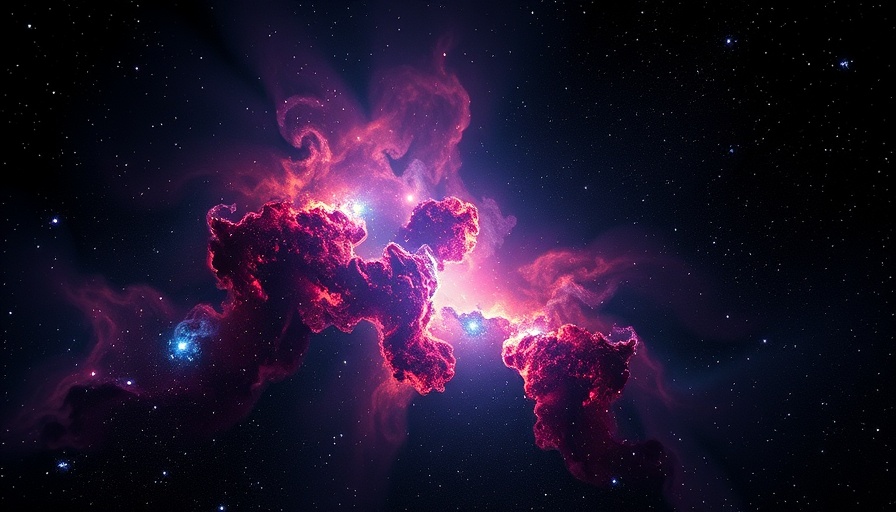
Webb Telescope Captures Stunning Details of Star Formation in Lynds 483
The James Webb Space Telescope (JWST) has unveiled extraordinary high-resolution images of the actively forming star system Lynds 483, located 650 light-years from Earth in the constellation Serpens. This stunning near-infrared image showcases the intricate structures created by two protostars as they emit gas and dust in vibrant colors of orange, blue, and purple.
A Cosmic Hourglass: The Unique Structure of Lynds 483
Lynds 483 reveals itself as a striking hourglass shape, dominated by a dense disk of gas and dust at its center, with luminous gas cones emerging from the protostars. The JWST’s sensitive imaging can detect light through this thick dust, allowing glimpses of bright stars shining behind it, challenging our understanding of star formation processes. Notably, the darker areas correspond to the densest dust, blocking most starlight from reaching our telescopes; Webb’s NIRCam has beautifully captured the muted stars appearing as tiny orange pinpoints amid the chaos.
Unraveling Star Ejections: Jets and Outflows
The dynamic nature of Lynds 483 is illustrated by the stars’ jets and outflows, many of which appear tangled and warped. In the upper right corner of the image, observers can find a prominent shock front, where fast-swirling material collides with denser substances, slowing and scattering it in spectacular fashion. The tangled material seen in the image contains new fine details; understanding these ejective dynamics requires further study by astronomers eager to refine models of star formation.
The Chemical Reactions Within Lynds 483
Another fascinating aspect of Lynds 483 is the chemical composition of the ejected materials. As the protostars burst forth jets over time, they initiate chemical reactions that yield various molecules, including carbon monoxide and methanol. These organic compounds act as crucial building blocks in the universe's chemical landscape and could play roles in the formation of future planets within these regions, mirroring processes that formed our own solar system.
Lynds 483 in the Larger Cosmic Context
While Lynds 483 is not the only stunning stellar nursery that Webb has explored, it distinguishes itself with its unique structure and the interplay of colors and complexities in its formations. Compared to other well-known areas like the Orion Nebula and Eagle Nebula, Lynds 483 provides an intimate yet dynamic tableau of star formation. Each of these regions offers key insights into the intricacies of stellar genesis and the ongoing evolution that shapes the universe.
The Legacy of Astronomy: A Tribute to Beverly T. Lynds
This star formation area carries the name of pioneering astronomer Beverly T. Lynds. Renowned for cataloging nebulae in the early 1960s, her work laid the groundwork for contemporary studies of star formation and nebular structures. The JWST’s ability to reveal such vividly detailed images of Lynds 483 symbolizes the ongoing journey of astronomical exploration, building upon the rich history laid by scientists like Lynds.
What Lies Ahead for Lynds 483 and Future Observations
As the protostars in Lynds 483 continue to evolve, astronomers are certain that upcoming observations will yield even greater insights into the processes at play within this stellar nursery. Future studies may focus on monitoring changes in the lower part of the star system and the shifts in ejections over time. Ultimately, this grand cosmic theater not only enhances our comprehension of star formation, but it also hints at how our own solar system may have originated, provoking curiosity and excitement for what lies in store for stargazers and scientists alike.
As we venture deeper into the cosmos and unveil its secrets, the JWST stands poised to illuminate further mysteries that can reshape our understanding of our universe. This leap in space exploration beckons enthusiasts and curious minds around the world to stay engaged and learn more.
 Add Row
Add Row  Add
Add 




Write A Comment